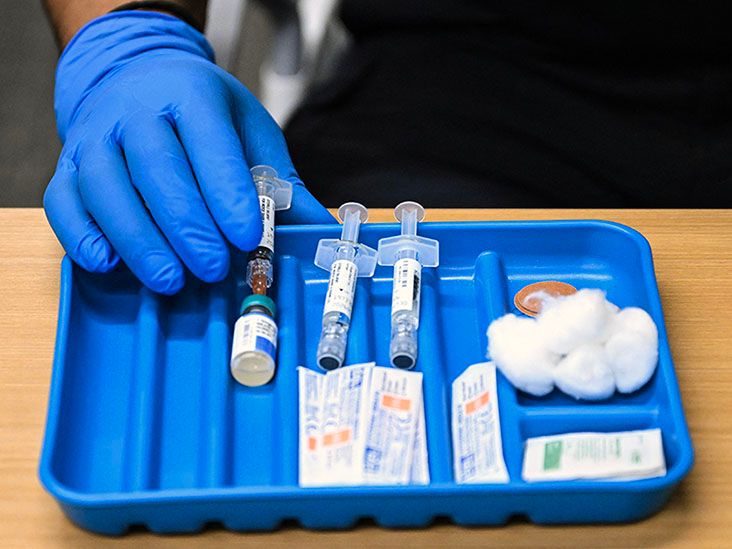Bullous systemic lupus erythematosus (BSLE) is a rare presentation occurring in people with systemic lupus erythematosus (SLE). It causes blisters on the skin and may affect the internal organs.
SLE is a complex condition that can have a range of symptoms affecting the skin or organs. BLSE presents on the skin and may appear similar to other conditions that cause blisters.
This article examines the symptoms and causes of BSLE. It also looks at how doctors diagnose the condition, treatment options, and more.
View the slideshow below for photos of BSLE.
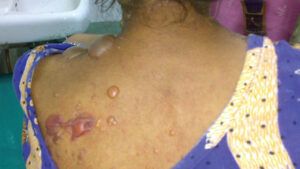
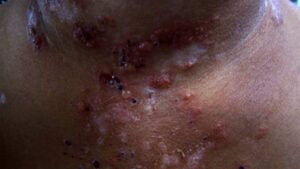
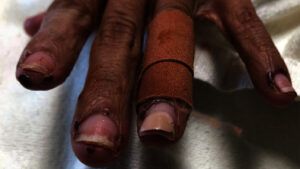
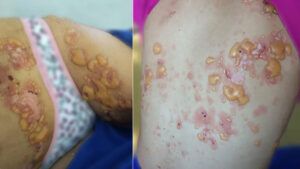
Learn more about what lupus can look like.
BLSE
It is more likely to affect areas of the skin with more sun exposure, but the blisters can appear anywhere. The more common parts of the body the blisters develop on are:
- face
- neck
- trunk
- skin on the outside of joints such as the back of the elbow, front of the knee, or the knuckles
- near the clavicle (collarbone)
- the border around the lips
- inside the mouth
The lesions may itch in some cases. They usually heal without scarring, but changes in skin pigmentation often occur.
According to a 2022 review, the symptoms of BSLE can also occur in places other than the skin. The review highlights older research indicating that 69% to 90% of reported cases also involve internal organs. These findings are usually present when a doctor diagnoses BSLE, but they can develop later.
The older research mentioned, along with another review discussed, suggests that around 50% of people with BSLE have kidney involvement, and up to 90% will develop kidney disease in their lifetime.
Anywhere from 40% to 90% of people with BSLE experience anemia, leukopenia, or both.
The review explains that the most common symptoms outside the skin are:
- arthritis
- arthralgia, or joint stiffness
- lupus nephritis, which involves lupus autoantibodies affecting the kidneys
- cytopenia, which means low levels of red or white blood cells or platelets
In only a few cases, serositis and neuropsychiatric lupus are associated with BSLE.
Bullous lupus is a complication of SLE. Scientists do not completely understand why it develops, but the autoimmune reaction in BSLE is caused by antibodies to collagen between the upper and lower layer of the skin (epidermis and dermis, respectively).
This causes the membranes in the skin to weaken, and blisters appear. Scientists have also identified additional autoantibodies that are involved,
Learn more about the types of lupus.
In
Because BLSE may have similarities to other conditions, doctors may misdiagnose it or delay treatment. The process of a doctor diagnosing BLSE includes:
- careful review of the clinical presentation, which may involve an examination
- blood tests
- laboratory analysis of tissue samples
- immunofluorescence, which involves staining the skin tissue
Additionally, doctors will usually assess someone for internal organ involvement.
Doctors consider the antibiotic dapsone to be the first-line treatment for mild BSLE.
BSLE typically responds rapidly to dapsone therapy and resolves within 1 year. A person will usually begin with a dapsone starting dose of 50 milligrams (mg) daily, increasing by 25 mg each week following close clinical monitoring via lab tests. The maximum dose is 75 mg twice daily if a person’s body can tolerate it.
However, dapsone may have some side effects,
- hypersensitivity syndrome
- hepatitis
- anemia
A doctor may consider using steroids. To prevent the side effects of steroids and to keep the dose as low as possible, researchers have used steroid-sparing agents with modest results. These immunosuppressive drugs
- methotrexate
- cyclophosphamide
- azathioprine
- mycophenolate mofetil
Studies have also reported using anakinra and intravenous immunoglobulins.
A person’s doctor can advise on what treatment they recommend and will be able to monitor for any side effects.
Bullous lupus is a rare condition. Older research discussed in a
BSLE predominantly affects people assigned female at birth in their second to fourth decade of life, which is between ages 10 and 39 years.
The highest incidence of BSLE is in females of African descent, but the condition can occur in anybody.
Possible complications of BSLE
- skin infection
- sloughing esophagitis, which involves the shedding of large fragments of the mucosal lining of the esophagus
- complications from organ symptoms
- side effects from medications
A person can talk with their doctor to learn ways to help reduce the likelihood of complications and to manage any that develop.
Bullous systemic lupus erythematosus (BSLE) is a rare condition that affects some people with the autoimmune disease systemic lupus erythematosus (SLE).
It usually causes sudden skin blistering. It may also affect internal organs, which could lead to serious complications such as kidney disease.
The antibiotic dapsone is the first-line treatment for BSLE, but doctors may also prescribe steroids and immunosuppressants to manage symptoms.
If a person receives a BSLE diagnosis, they can work with their doctor to create a suitable treatment plan. The doctor can also advise them on possible complications and ways to manage them.


